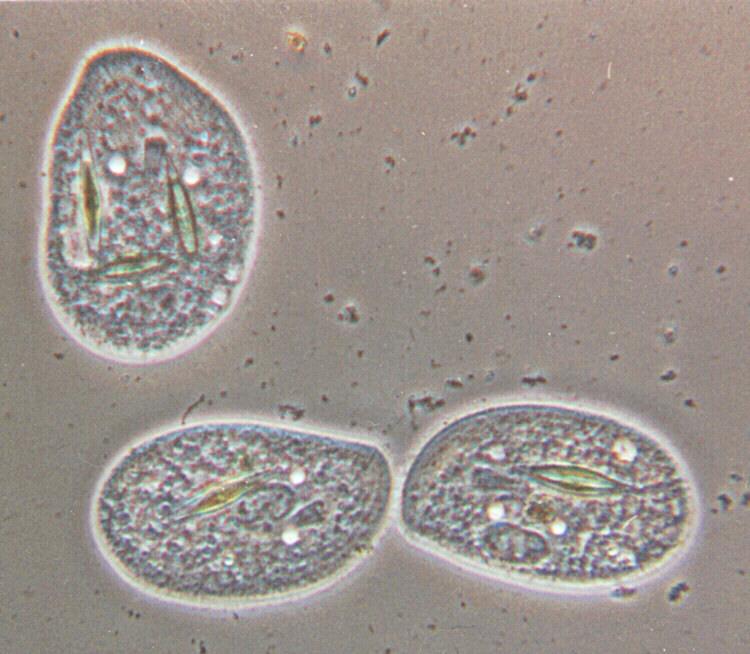|
| Query: Protozoa | Result: 9th of 36 | |
Protozoa series - REPOST #4 - The Ciliate Family - new scans coming soon
| Subject: | Protozoa series - REPOST #4 - The Ciliate Family - new scans coming soon
| | Poster: | Schmode (schmode@vossnet.de)
| |

| File size : 68456 bytes
File date : 2001:02:21 16:31:22
Resolution: 750x654
Jpeg process : Baseline
Posted Newsgroups: alt.binaries.pictures.animals
Posted Date: Thu, 23 Jul 1998 00:26:28 +0200 |
Protozoa series - REPOST #4 - The Ciliate Family - new scans coming soon
Hello again,
this Protozoon belongs to the family of the ciliates. *I've identified
it as a Nassula, but I may be wrong - there are many similar species. By
the way, please don't get me hooked on my talking of families, species
and such; though I have a strong interest in Protozoa my dislike of
biological taxonomy is just as strong (I am not a biologist), so I use
these terms just to point out relations without claiming scientific
correctness in using them*.
Ciliates are characterized by totally or in part being covered with
small filaments ("cilia") which can be actively flexed by the organism;
*the biochemical basis for that motion is very similar to that of a
muscle*. The cilia are invisible in this shot; I'll bring you another
one later where they can be seen. Ciliates are algae and bacteria
hunters. The cilia enable them to carry out fast, controlled movements;
in fact, their swimming speed compared to their body size can be faster
than a dolphin's. These ones measure about 1/250 inch in length. The
dark grey spot, best seen in the organism on the right side, is the cell
nucleus which contains the genetic information.
The most remarkable feature of this member of the ciliate family is the
mouth funnel in the middle of the organism's front third; this funnel
enables it to devour large, compact algae. There are numerous types of
mouth constuctions among ciliates; I hope I shall be able to show you
some later. The green, oval spots in the ciliates' interior are algae
being digested; *in this case the dinner consists of several diatomeae*.
This type of alga is covered with a hard shell of silicic acid which
does not keep the ciliate from eating it. The smaller, colourless
bubbles are the ciliate's organs of excretion.
More Protozoa still to come.
Take care
Ralf
name="Ciliate.jpg" |
^o^
Animal Pictures Archive for smart phones
^o^
|
|

